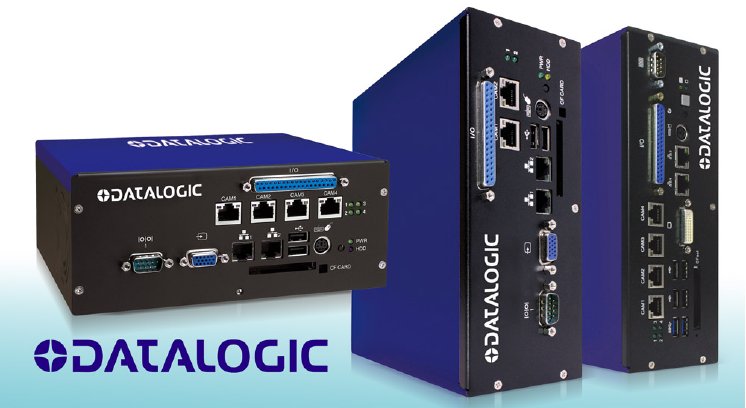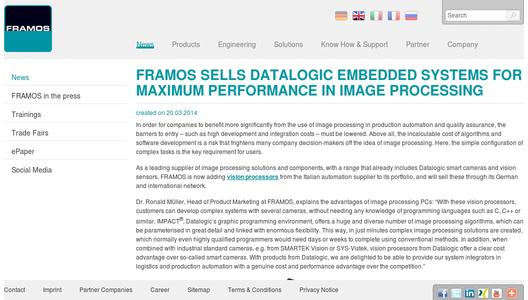As a leading supplier of image processing solutions and components, with a range that already includes Datalogic smart cameras and vision sensors, FRAMOS is now adding vision processors from the Italian automation supplier to its portfolio, and will sell these through its German and international network.
Dr. Ronald Müller, Head of Product Marketing at FRAMOS, explains the advantages of image processing PCs: “With these vision processors, customers can develop complex systems with several cameras, without needing any knowledge of programming languages such as C, C++ or similar. IMPACT®, Datalogic’s graphic programming environment, offers a huge and diverse number of image processing algorithms, which can be parameterised in great detail and linked with enormous flexibility. This way, in just minutes complex image processing solutions are created, which normally even highly qualified programmers would need days or weeks to complete using conventional methods. In addition, when combined with industrial standard cameras, e.g. from SMARTEK Vision or SYS-Vistek, vision processors from Datalogic offer a clear cost advantage over so-called smart cameras. With products from Datalogic, we are delighted to be able to provide our system integrators in logistics and production automation with a genuine cost and performance advantage over the competition.”
Datalogic offers an image processing PC in a performance class to suit the application, with Intel® GPUs and multi-core CPUs from dual-core 1.9 Ghz to quad-core 2.1 GHz, and with up to four GigE camera ports with Power over Ethernet (PoE), or up to 6 USB2.0/USB3.0 ports. Thanks to their carefully selected components and their vibration and impact-resistant design, they form a reliable basis for long-lasting automation systems. There is no need to purchase and install several cameras, saving additional costs and reducing the time required for setup and network connections. The IMPACT® software and vision processors support over 100 different GigE Vision®-compatible cameras, including line-scan models. Photos and video recordings from up to 4 cameras of different types and different resolutions can be analysed on one PC. What’s more, the long cables enable up to four inspection points in a production system, for example, to be operated with a single image processing PC. In addition to numerous image processing algorithms, the software also offers direct interfaces to common factory automation systems, for easy system integration.
Therefore, system integrators can implement a huge variety of image processing projects, such as high-resolution image analysis (e.g. LCD or solar panel checks), high-speed analysis (e.g. railway inspection, conveyor belt inspection, automated packaging of foodstuffs or pharmaceutical products), quality assurance (e.g. inspection of injection moulded parts, folded sheet metal products or injection needles), multi-camera analysis in logistics (e.g. identification and documentation of packages, and colour analysis (e.g. print and textile inspection), so ensuring the quality of their production processes and increasing effectiveness.


